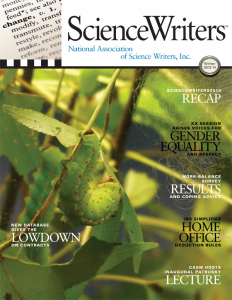The IRS wants to help freelance writers and other owners of home-based businesses who take deductions for home offices. An accommodating agency announced that freelancers have the option to use new, simpler rules based on the size of their offices, starting with returns for calendar year 2013 that are filed in 2014. Under the revised rules, freelancers can more easily calculate their deductions and reduce their record-keeping and paperwork requirements. But the streamlining left unchanged the strict eligibility requirements that must be satisfied by freelancers who claim such money-saving deductions. They must use their office spaces exclusively and regularly as their principal place of business.
Here are some reminders for work-at-home writers on the pluses and minuses of switching from the actual expense method to the new, simplified method.
Writers can use the actual expense method only if they complete Form 8829 (Expenses for Business Use of Your Home), an intimidating form with 43 lines. To accomplish that chore, you must make complicated calculations when, for example, expenses benefit both the business and personal parts of your home — such as rent, or depreciation if you own your home, and insurance premiums and utility bills. The allowable deduction then goes on Schedule C (Profit or Loss From Business).
Form 8829 and Schedule C must accompany Form 1040 and are available at irs.gov. While you’re at the site, also download Publication 587, Business Use of Your Home, for a detailed explanation of the home-office deduction and its requirements.
The new reprieve for writers is that they are no longer stuck with slogging through all the calculations on Form 8829. Instead, says the IRS, they can shift to the simplified method and complete a new, “significantly simplified” form. Writers who are able to answer “yes” to a series of straightforward questions then just multiply their home office’s square footage by a prescribed rate and place the allowable deduction on Schedule C.
The rate is $5 for every square foot of home-office space, up to a maximum of 300 square feet. Hence, the simplified method sets a ceiling of $1,500 on each year’s deduction.
A top deduction of $1,500 is chump change for freelancers in expensive housing markets like the metropolitan areas of Boston and San Francisco. Writers with write-offs that greatly exceed $1,500 or offices much larger than 300 square feet ought to stick with the actual expense method.
Writers running the numbers to see which method is more beneficial need to be mindful of their often hefty annual depreciation write-offs for an office’s cost. The actual expense method allows depreciation deductions over a 39-year period for the share of the house (but not the land) allocable to the business. The simplified method bars such deductions.
Writers who use the actual expense method have to allocate mortgage interest and real estate taxes between personal use (Schedule A for itemized deductions) and business use (Schedule C). But writers don’t have to allocate when they use the simpler option. They can claim all of their allowable interest and taxes on Schedule A.
Yet another wrinkle is that ditching the actual expense method for the simplified method means no write-offs for expenses that benefit the business part of your home — such as insurance premiums and utility bills.
The rules are more favorable for other normal expenses that are unrelated to business use of homes. Writers who use the new option remain entitled to claim deductions on Schedule C for all unrelated business expenses, such as outlays for postage, travel, the cost of help, and supplies.
There’s more fine print. For 2013, the IRS allows writers to use either of the two methods, whichever one affords them a larger deduction. But writers are locked in once they select a method. The IRS doesn’t permit a later change to the other method for 2013, though it does allow switching back and forth between methods from year to year.
Suppose you use more than one home with a qualifying home office in the same year. The IRS says you can use the simplified method for only one home in that year. However, you can use the simplified method for one home and actual expenses for any others in that year.
Julian Block is an attorney and author based in Larchmont, N.Y. He has been cited as: “a leading tax professional” (New York Times); “an accomplished writer on taxes” (Wall Street Journal); and “an authority on tax planning” (Financial Planning Magazine). For information about his books, visit julianblocktaxexpert.com.




